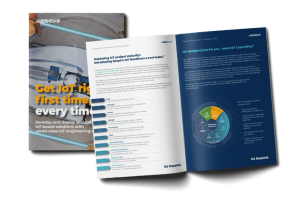
How to navigate the complexities of device-to-cloud IoT
Go Beyond: From IoT Idea To Long-Term Value
How to navigate the complexities of device-to-cloud IoT
Introduction
8 out of 10 IoT projects fail before they even launch. The challenges in IoT are universal. They impact the scrappy start-ups as much as the multinational enterprises of the world.
Despite all the incredible product and engineering resources at its fingertips, even Amazon ran into problems when it came to deploying IoT – namely for its Amazon Lockers product line.
The retail giant was unable to solve the complexities of successfully integrating cellular IoT connectivity into the Lockers product, and deploying it around the world at scale. It explored numerous avenues and engaged industry specialists – all with little progress. Then it found Eseye.
Today, Amazon is one of Eseye’s largest and most renowned customers, and we support it on multiple IoT projects. The Amazon Lockers product is now manufactured using a single SKU, is shipped globally, and connects straight out-of-the-box. No issues, no drama. Amazon has total connectivity reliability – and can confidently expect this for the lifetime of the deployment
This page outlines how we can take your IoT device or project from idea all the way to implementation, and beyond – with a right first time approach. Everything we do is fixed on a single goal: to help you realize lasting value from your project.
It’s time to go beyond. Let’s get started!

Today’s IoT challenges
IoT is a complicated world filled with uncertainty. Some risks are clear to a business from the outset. Others they won’t have considered – we find that our customers are often unaware of the perils.
Now for some insider knowledge. Invest time in researching and exploring some of the most common challenges you might face when embarking on your IoT project
Remember it’s never too late to step back, reassess and take a different approach, even if you’ve already started down a track. Decisive action now could save you a lot of time and money in the long run.
Device design and development
is always harder than you think
Let’s start off with the problem that Eseye has bet our business on solving. Why do IoT projects fail? In a recent survey of 750 companies, Kaleido Intelligence found the number one challenge2 (cited by 84% of respondents) is designing an IoT device right first time – in particular with regard to getting the connectivity right.
These difficulties are compounded by the fact that a commercial IoT (or M2M) device usually has to be designed from the ground up. Each one is unique, so the design approach has to be unique too. They also have a lifecycle of between five to 15 years, so must be ready to adapt to changes within the operating environment, in areas ranging from available networks and data costs to regulations and security threats.
Here are some of the main complexities that can arise during IoT device design:
- Hardware design
- Connectivity:
- Power management
- Software design
- Network and regional connectivity restrictions
- Regulatory compliance
- Interoperability
- Data security
- Environmental considerations
With over 15 years’ experience in the IoT industry, delivering more than 1,000 IoT projects for customers, we’ve learned the hard lessons and know the pitfalls to watch out for.
Scarcity of skills
Reflecting the ‘talent gap’ affecting the IT industry as a whole, there’s a real shortage of skilled professionals with the knowledge and expertise required to develop, deploy, and manage IoT.
Rapidly evolving technology: IoT connectivity, and cellular connectivity in particular, requires specialised knowledge and engineering skills to develop and implement. Many organisations and professionals struggle to keep up with the latest developments and best practice
Interdisciplinary nature: IoT connectivity, and cellular connectivity in particular, requires specialised knowledge and engineering skills to develop and implement. Many organisations and professionals struggle to keep up with the latest developments and best practice
Without access to professionals with the right capabilities, the full potential of any IoT project
may not be realised, and organisations may struggle to compete in the global marketplace.
Network switching
Having complete connectivity flexibility, so that IoT devices can switch networks and avoid any disruption, is essential for a successful long-term IoT deployment. But network switching isn’t easy. Here are some considerations to bear in mind:
Multi-network support: IoT devices may need to remain successfully deployed in the field for as long as 15 years, which requires access to multiple cellular networks.
Over-the-air (OTA) updates: it’s important for connectivity flexibility and resilience that new network options can be downloaded to the device once in the field, using an OTA network push. This is currently defined by the eUICC (eSIM) standard, and takes the form of a network profile downloaded into the Step 2 part of the eSIM.
Network fallback: once an OTA network switch is activated, what happens if that new network doesn’t connect? It needs to fall back to an alternative. Many providers only offer a one-way switch to get your device out of a difficult situation. We call this Hotel California – ‘once you check in, you can’t check out’. This poses a real threat to any IoT project
Steering rules: the ability to control network switching and rules is critical to safeguard the device from disconnection in the future. The rules should also be tailored based on the device use case and regional deployment profile, in order to optimise the connection to deliver maximum uptime.
Overall, IoT network switching requires careful understanding, planning, management and investment to overcome these challenges and ensure reliable, secure and efficient connectivity for IoT devices.
Flexible technology choice and selection
Businesses also want connectivity that evolves in line with technological developments, to ensure their devices in the field remain connected. That might be achieved by using cellular connectivity today, but tomorrow it might be Thread or Wi-Fi HaLow or another new communication protocol we don’t even know about yet.
Being aware of technological developments in the IoT connectivity space is therefore important to ensure you have the best advice to future proof your device and project. Having experts on hand to answer questions and provide recommendations is something our customers value.
Low cost or long-term value?
There are lots of SIM providers out there with attractive low prices and fixed, bundled multi-year packages. They may be reselling connectivity from another network operator, using a single ‘roaming SIM’, which means a much-simplified solution and reduced capability.
While some IoT use cases may lend themselves to low-cost connectivity, and can accept a level of downtime risk, unfortunately many cannot. Think about remote patient monitoring, aircraft tracking, human embryo temperature monitoring and power generation. They all need as close to 100% connectivity as possible. Zero downtime is the panacea.
A key consideration before you select any connectivity vendor or provider, therefore, is how much downtime are you willing to accept? What is the value of just 1 or 2% improvement in device uptime? There is an old saying: you pay for what you get. There is another saying: buy cheap, buy twice. These statements couldn’t be truer than with IoT connectivity.
Without deep technical know-how, it’s difficult to tell a good deal from bad. So get the right advice, make buying decisions carefully, and always look beyond just price.
Remember it’s never too late to step back, reassess and take a different approach…”

Only a limited number of IoT providers have the breadth of skills…”

Over-the-air (OTA) definition: In IoT, OTA refers to the wireless transmission of software, firmware, or configuration updates to IoT devices, enabling remote maintenance and upgrades without the need for physical access.
Eseye: Turning failure into success
Now let’s look at how Eseye solves the problems of global device to cloud connectivity – through planning, design and implementation, and into the operational phase, to ensure you continue to achieve your commercial objectives.
Unlike our competitors, which typically only cover one or two areas of specialism, we provide a complete set of key capabilities that work together:
Device optimisation - first, we leverage our hardware and device expertise to design connectivity intelligence into the device.
Network availability - next, we provide access to the most comprehensive global range of mobile network providers available, through our AnyNet Federation.
eSIM connectivity - we apply our award-winning and leading edge eSIM technology, with advanced multi-network (IMSI) and network switching capability, to deliver near 100% uptime, anywhere.
Infinity IoT Platform™ - we orchestrate and optimise connectivity and device management across the entire estate, with our industry leading platform
Managed IoT Services - and finally, we wrap world-class device design, deployment and connectivity management services around the project to give it the best chance of success – and sustain that success as technology evolves and the business grows.
All five of these capabilities are supported by a cloud-native infrastructure, combined with our software defined network (SDN) and regional points of presence (POPs). This ensures maximum reliability, as well as adherence to regional regulations.
So let’s double click into each of these capabilities…
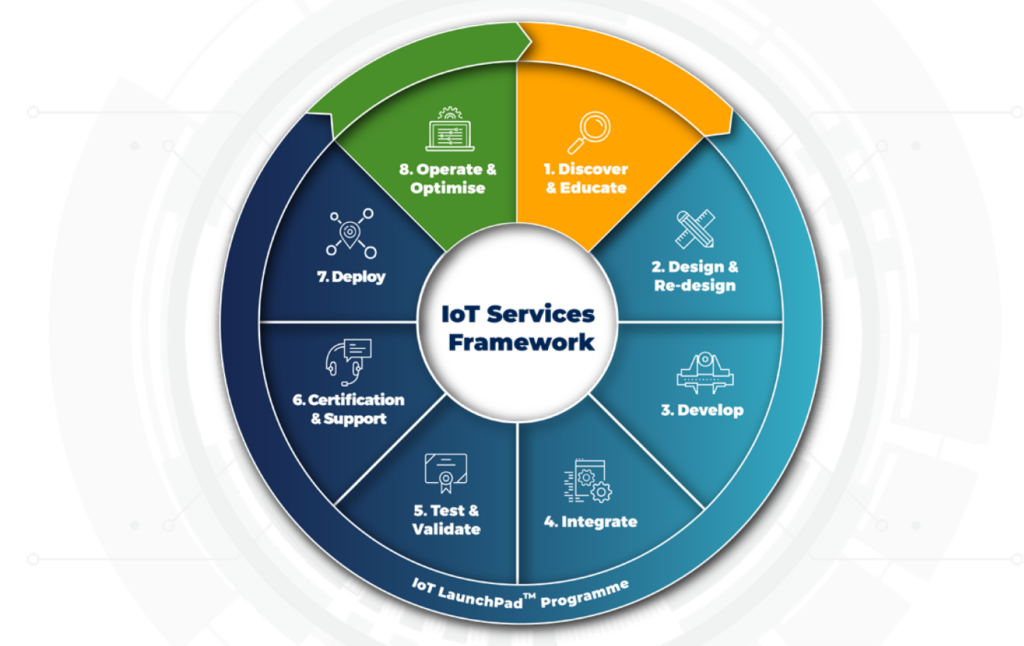
Eseye solves the problems of global device to cloud connectivity…”

Permanent Roaming Quick definition: Permanent roaming refers to the continuous use of a mobile device on a foreign network outside its home country, without returning to its home network. This can lead to regulatory and operational challenges as it bypasses the intended short-term nature of roaming agreements.
Everything starts with the device: moving beyond connectivity
The best network and IoT connectivity platform in the world can’t overcome bad device design.
Our deep expertise in building, integrating and troubleshooting global connectivity helps customers and partners to overcome firmware, modem and network compatibility issues that have plagued the industry for decades.
Device design and advisory services: A full lifecycle of design, prototyping, integration, validation, testing and certification
services to help you get device connectivity and design right the first time.
Hera Series IoT Router: A range of specialist IoT hardware routers
with embedded global AnyNet SIMs that can be deployed and activated to deliver immediate out-of-the-box connectivity results.
AnyNet SMARTconnect™: a solution that integrates intelligent connectivity software with global network access. This approach ensures that IoT devices are not only connected but also optimized for performance and cost-efficiency.
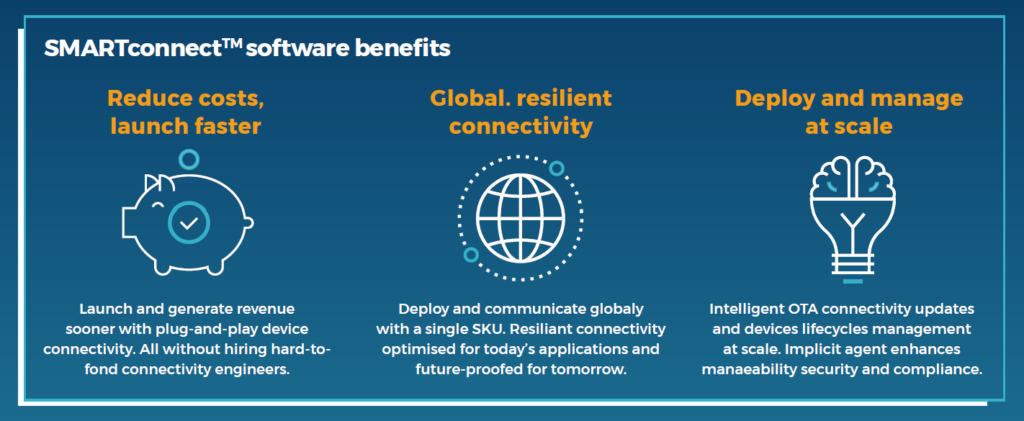
Size matters: unlimited network choice
So let’s pivot now to look at global connectivity
Over the past 15 years we’ve built the AnyNet Federation – or as we sometimes like to call it, The Star Alliance of Global Connectivity.
Just like the Star Alliance, with a single Eseye ticket (or eSIM) the AnyNet Federation gives you access to the world’s largest virtual mobile network, offering the widest choice of localisation (i.e. home networks) and roaming.
Our capabilities mitigate any risk related to permanent roaming, including high and variable costs, regulatory challenges and regional restrictions. This allows us to operate in difficult connectivity geographies, and optimise for low power scenarios for NB-IoT and LTE-M, supporting Power Save Mode and eDRX for example. Through our extensive operator partnerships and roaming agreements, we provide in-fill connectivity to expand geographic reach. We’re continually expanding the AnyNet Federation to support other wireless networks and technologies.
The end result? Devices that are truly network-agnostic, and which stay connected and recover quickly in the rare event of a network outage. Total reassurance for your business, and peace of mind that connectivity is in the best possible hands.
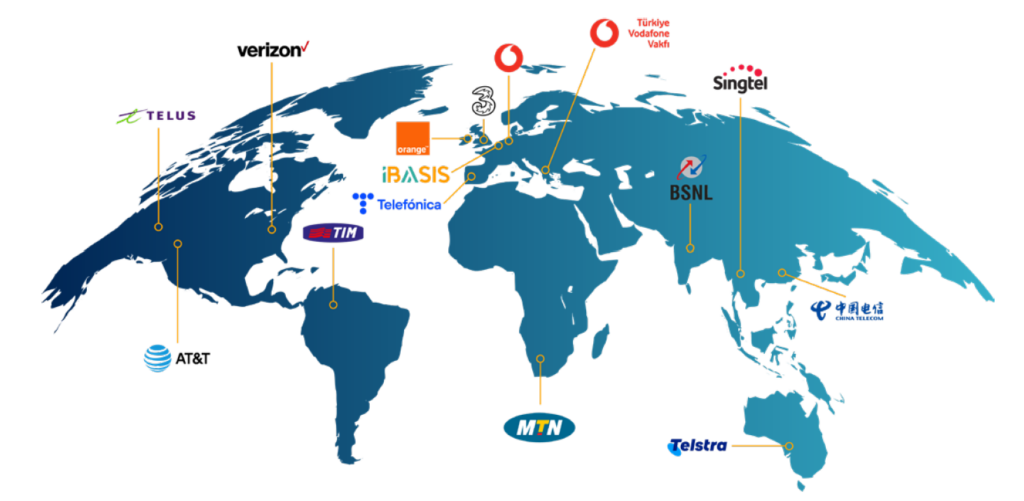
The diagram illustrates the operators we already have partnerships with, or are in the process of deploying
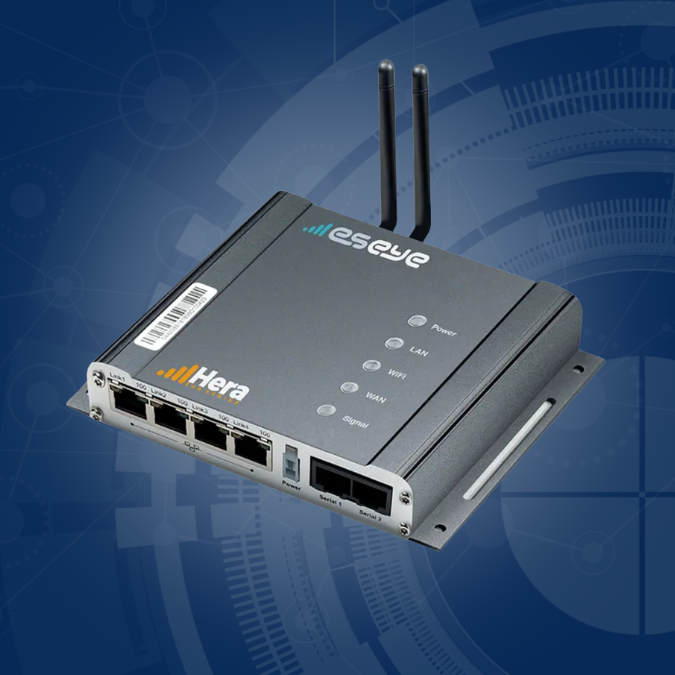
Bullet-proof connectivity: the award-winning AnyNet+ eSIM
A global IoT connectivity solution needs to be secure, seamless, and scalable. Fundamentally, you need complete assurance that your IoT connectivity will reliably work for your devices, every time and everywhere – and be future-proof.
At the heart of our connectivity solution lies the advanced AnyNet+ eSIM. This SIM is unlike others on the market, with patented multi-IMSI technology combined with an eUICC that holds several tier 1 bootstraps. This provides crucial redundancy to ensure it can reconnect in any location.
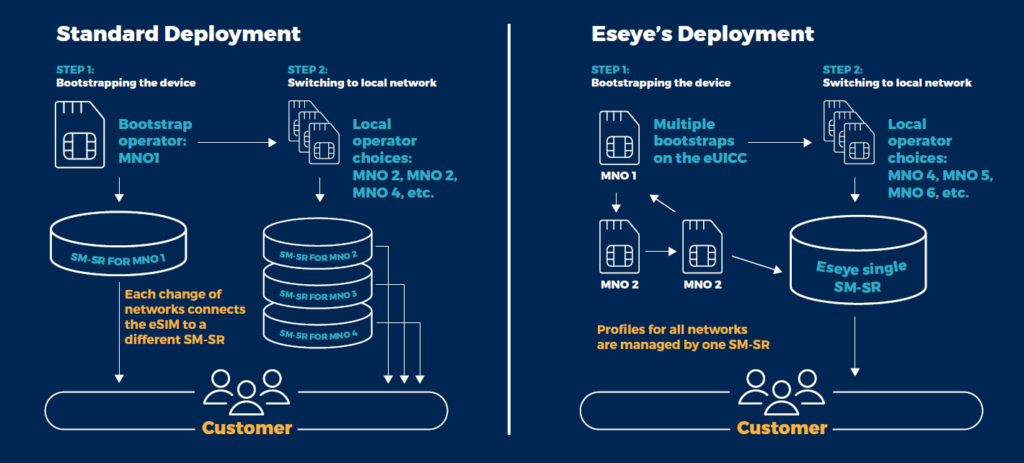
Customised algorithms within the SIM card dynamically select the right network profile to deliver the best service. These profiles can be pre-loaded to the SIM or downloaded over the air post-deployment, to ensure the most effective profile is in use based on the real-world deployment location.
Eseye leads in eSIM connectivity with a solution that delivers TCO and faster time-to-market for enterprise customers.
Steffen Sorrell, Chief of Research, Kaleido Intelligence
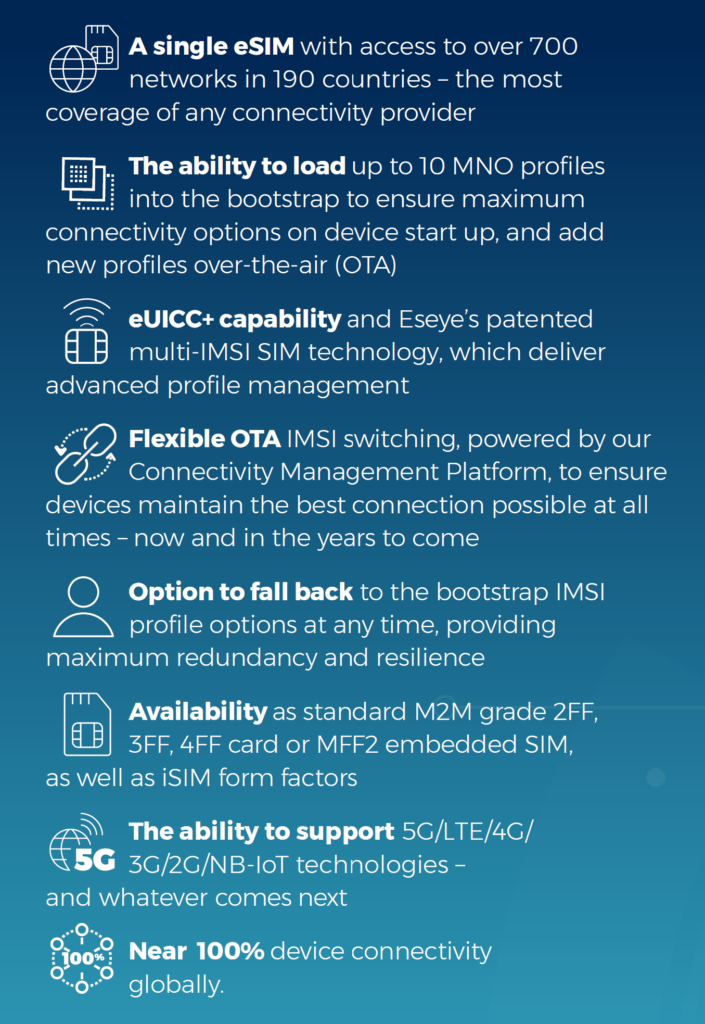
Customised algorithms within the SIM card dynamically select the right network profile…"
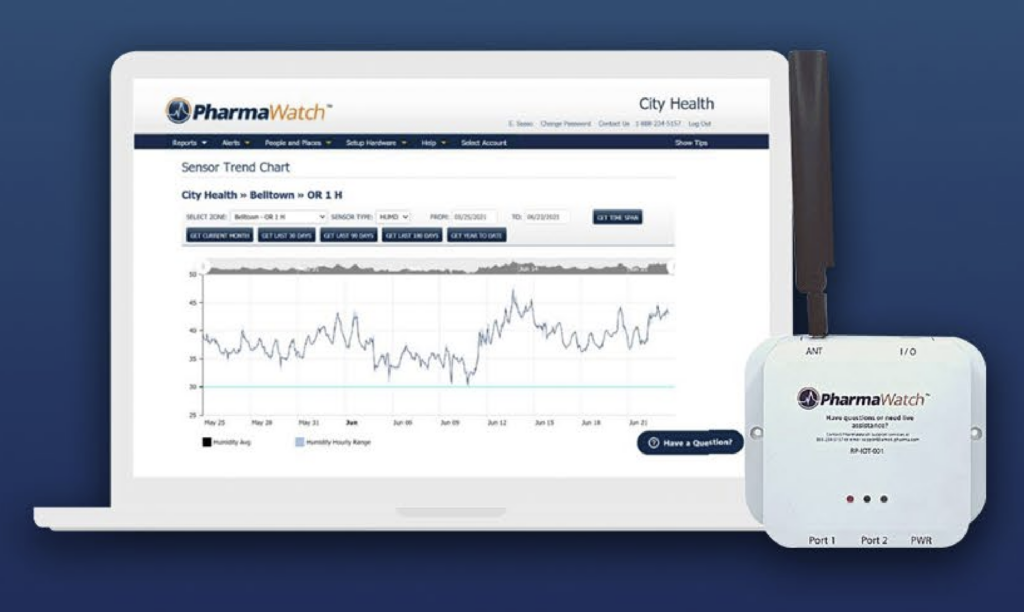
Future-proofed IoT connectivity
management: introducing Infinity
An exceptionally powerful cellular platform, Infinity gives you complete oversight of your entire IoT network from a single system. It codifies Eseye’s deep IoT expertise, vast experience, and industry-leading tools to enable you to orchestrate, automate and optimise connectivity throughout the life of the device.
The Infinity IoT Platform™ gives you the ability to see and control each and every device in your IoT estate, plus manage all your connections.
Infinity is designed to flex in order to accommodate emerging IoT technologies and best practice, and keep pace as your business requirements evolve
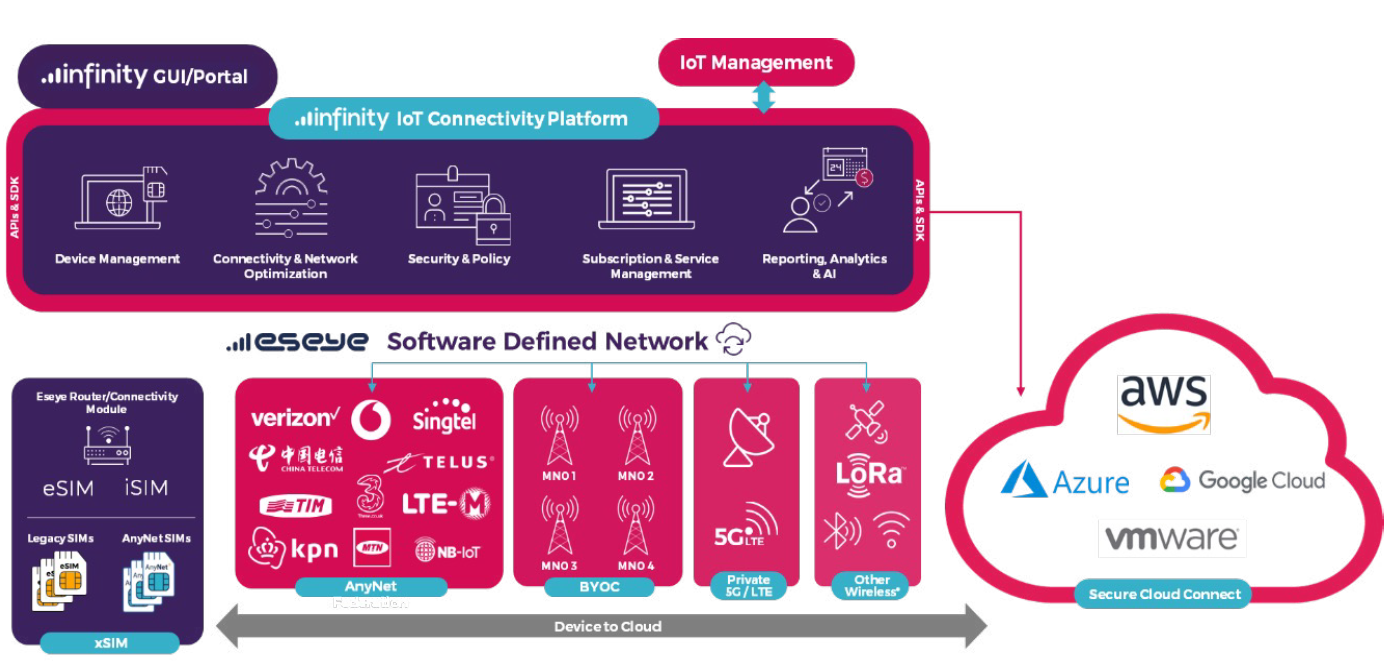
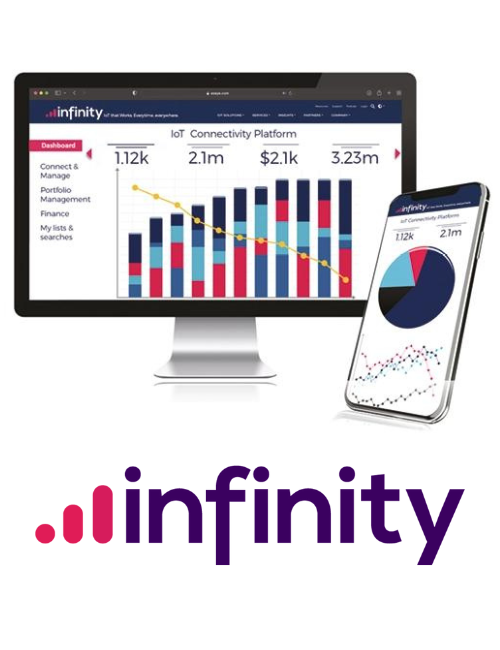
“It also provides real-time and batch data feeds…”
With you at every step: IoT Services & Managed Connectivity
When you’re revolutionising your business with IoT technology, choosing the right partner can change everything. Eseye provides a suite of professional services, capabilities, and strategic partnerships to help you ideate, design, and deploy IoT solutions globally. We can then stand alongside you as your solution evolves, ensuring operational effectiveness and providing expert guidance as you scale and develop your deployment.
Assessing your IoT maturity: Introducing the Eseye IoT Readiness Level™ Index
Pioneered by Eseye, and derived from NASA’s Technology Readiness Level (TRL) framework, the IoT Readiness Level (IRL) Index aims to measure the maturity of IoT readiness within a business, providing detailed information about the technical and operational readiness of an IoT device and project in context of market best practices and similar projects within their industry vertical.
This helps our customers determine their preparedness to successfully launch an IoT solution. Our extensive experience working with customers on IoT projects has shown that if they are able take proactive steps earlier in their projects, they can avoid lengthy and costly re-work later on.
Based on the results of the IoT Readiness Level Assessment, we create a customised ‘IoT LaunchPad’ programme aimed at moving the customer swiftly to a higher maturity level, or IRL score, and deliver against their project goals.
Eseye’s IoT LaunchPad Service

This service accelerates your time to market, reduces IoT engineering costs, improves device reliability, and future-proofs device design. We’ll tailor the programme to your specific needs, based on where you are in your IoT journey. Structured on a simple, cost-effective monthly subscription model, LaunchPad provides priority access to world-class hardware, connectivity engineers and SMARTconnect™ intelligent connectivity software to deliver near 100% connectivity for deployed devices.
With LaunchPad we can help you get IoT right first time, every time.
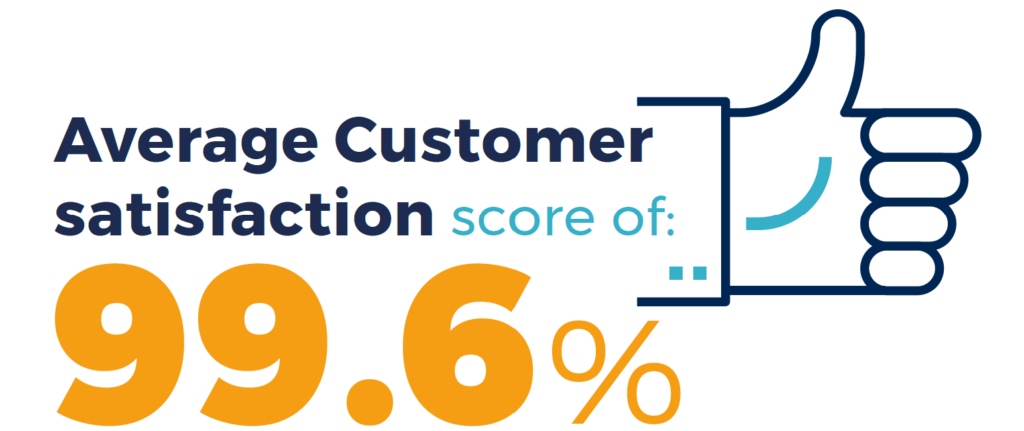
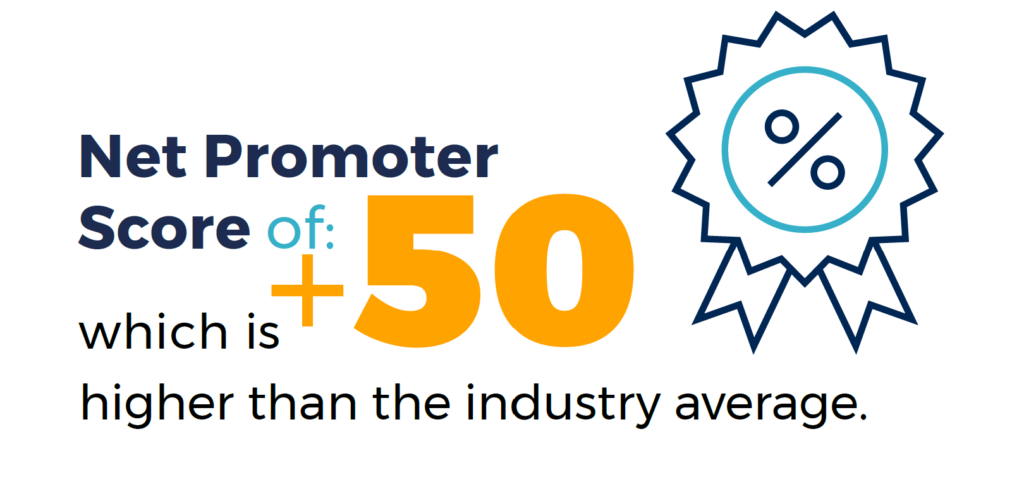
Of course, our service doesn’t end when a device is deployed. Really, that’s just the beginning. Once it’s in the field, we work proactively to ensure maximum uptime for its lifetime. With a variety of SLAs to suit your business and operational needs, we’ll put together a bespoke programme that ensures the right level of support at any given time
Working with Eseye
As a world leader in IoT connectivity solutions, we help our customers to realise lasting value from global IoT projects. In fact, we were recognised as a Visionary by Gartner® in its Magic Quadrant™ for Managed IoT Connectivity Services Worldwide for our advanced offering.
Our experience with Eseye has been exemplary. Eseye has proven to be a top-notch partner throughout this project – response times are quick, and the answers and help typically go above and beyond.
Casey Harris, Chief Technology Officer, Pharmawatch
We bring the deep device expertise needed to integrate, manage and optimise IoT connectivity for estates of any scale or complexity. Then seamlessly connect these devices across 190 countries and more than 800 networks. All with near-100% uptime.
We see IoT differently. We always start with the device – getting this right is the key to success. Together, we define what good looks like, then build a custom roadmap to deliver IoT right first time. We help customers to navigate every step, from idea to implementation and beyond.
Award-winning IoT success
Demand the best IoT partner for your project. Find out why global leaders onboard our technical expertise, from device design to development.
